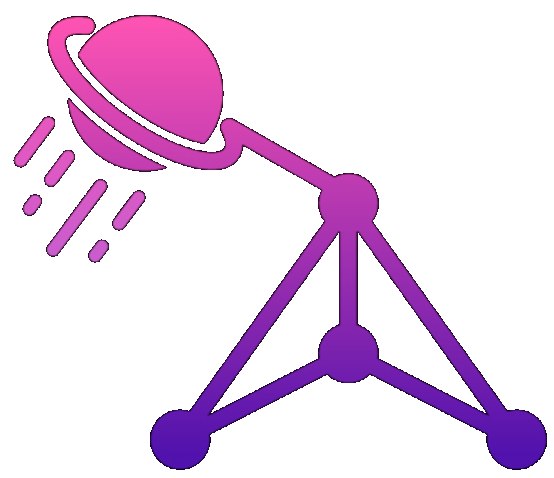"Show me the ROI." It's the first question every executive asks about AI initiatives. And it's the question that kills most AI projects before they start.
Here's the problem: traditional ROI calculations don't capture the real value of AI transformation. They focus on cost savings and efficiency gains while missing the strategic advantages that matter most.
After helping organizations measure AI impact across 200+ implementations, I've developed a framework that captures both immediate returns and long-term strategic value. Let me show you how it works.
Why Traditional ROI Calculations Fail for AI
Most ROI calculations follow this formula: (Gain - Cost) / Cost × 100. Simple, right? But AI projects break this model in three ways:
The visible benefits (time savings, cost reduction) are just 20% of the total value. The hidden 80% includes improved decision quality, faster innovation cycles, and competitive advantages that are harder to quantify but far more valuable.
AI capabilities improve over time. A workflow that saves 2 hours today might save 8 hours next year as the AI gets better and the team learns to use it more effectively.
Traditional calculations miss the cost of NOT implementing AI. While you're debating ROI, competitors are building AI-powered advantages that become harder to match over time.
The Multi-Dimensional ROI Framework
Instead of a single ROI number, I measure AI impact across four dimensions:
Dimension 1: Operational Efficiency
This is your traditional ROI—time saved, costs reduced, errors eliminated. It's the easiest to measure and often the least valuable.
Metric
Before AI
After AI
Improvement
Contract Review Time
8 hours
2 hours
75% reduction
Error Rate
3.2%
0.8%
75% reduction
Processing Cost
$150/document
$40/document
73% reduction
Dimension 2: Strategic Capability
This measures your ability to do things that were previously impossible or impractical.
"Before AI, we could analyze 50 customer feedback responses per week. Now we analyze 5,000. We're catching product issues and opportunities we never would have seen." - Maria Rodriguez, Product Manager at RetailCorp
- Scale of analysis (10x more data processed)
- Speed of insights (weekly to real-time)
- Depth of understanding (surface patterns to predictive insights)
Dimension 3: Innovation Acceleration
How much faster can you test ideas, iterate on solutions, and bring new capabilities to market?
One client reduced their product development cycle from 18 months to 6 months by using AI for market research, competitive analysis, and prototype testing. The value? They launched 3 products instead of 1, capturing $12M in additional revenue.
Dimension 4: Competitive Positioning
This is the hardest to measure but often the most valuable. Can you deliver capabilities that competitors can't match?
A law firm I worked with can now provide same-day contract analysis that previously took weeks. They've increased their client retention rate from 78% to 94% and can charge premium rates for speed and accuracy.
Real-World ROI Example: Legal Document Analysis
Let me walk you through a complete ROI calculation for a legal team that implemented AI-powered document analysis:
-
AI platform licensing: $120,000
-
Integration and setup: $80,000
-
Training and change management: $60,000
-
Total: $260,000
-
Time savings: 1,200 hours/year × $200/hour = $240,000
-
Error reduction: 85% fewer mistakes = $180,000 in avoided costs
-
Faster turnaround: 20% more billable work = $320,000
-
Subtotal: $740,000
-
New service offerings: $400,000 in additional revenue
-
Client retention improvement: $200,000 in retained business
-
Competitive differentiation: $300,000 in premium pricing
-
Subtotal: $900,000
The ROI Measurement Playbook
Here's how to implement this framework in your organization:
Before implementing AI, measure current performance across all four dimensions. You can't calculate improvement without knowing where you started.
Track metrics monthly for the first year, then quarterly. AI benefits often compound, so longer-term tracking is crucial.
Survey team members about job satisfaction, stress levels, and ability to focus on high-value work. These factors drive retention and productivity.
Expect 3-6 months for teams to fully adapt to AI-augmented workflows. Early measurements may underestimate long-term value.
What would happen if you didn't implement AI? Factor in competitive disadvantages and missed opportunities.
Common ROI Calculation Mistakes
This captures maybe 30% of AI's value. The real returns come from doing things you couldn't do before.
AI benefits compound over time. A 12-month ROI calculation misses most of the value.
Include training, change management, and ongoing optimization. These are real costs that affect ROI.
AI capabilities improve exponentially, not linearly. Your ROI in year three will likely be much higher than year one.
Making the Business Case
When presenting AI ROI to executives, lead with strategic value, not operational efficiency. Frame it as competitive advantage, not cost reduction.
Instead of: "This will save us $200,000 per year." Try: "This will let us deliver capabilities our competitors can't match, protecting $2M in annual revenue while opening $5M in new opportunities."
Remember: the goal isn't to justify AI investment—it's to demonstrate why NOT investing is the riskier choice.
